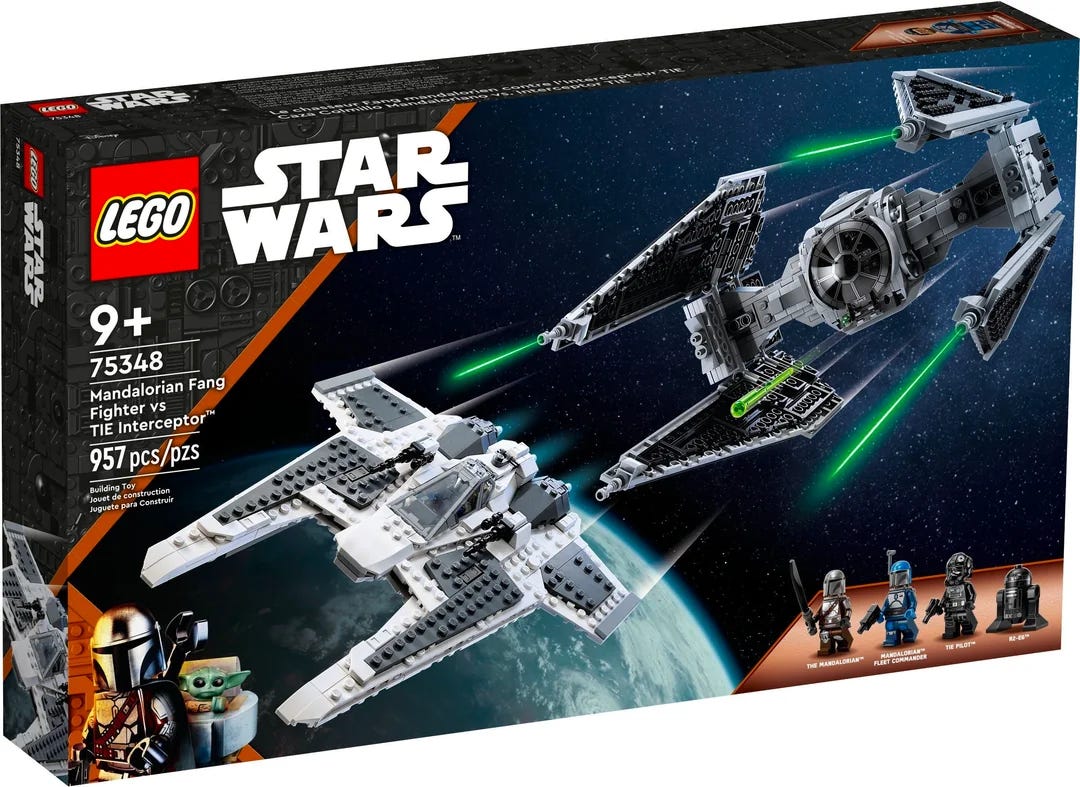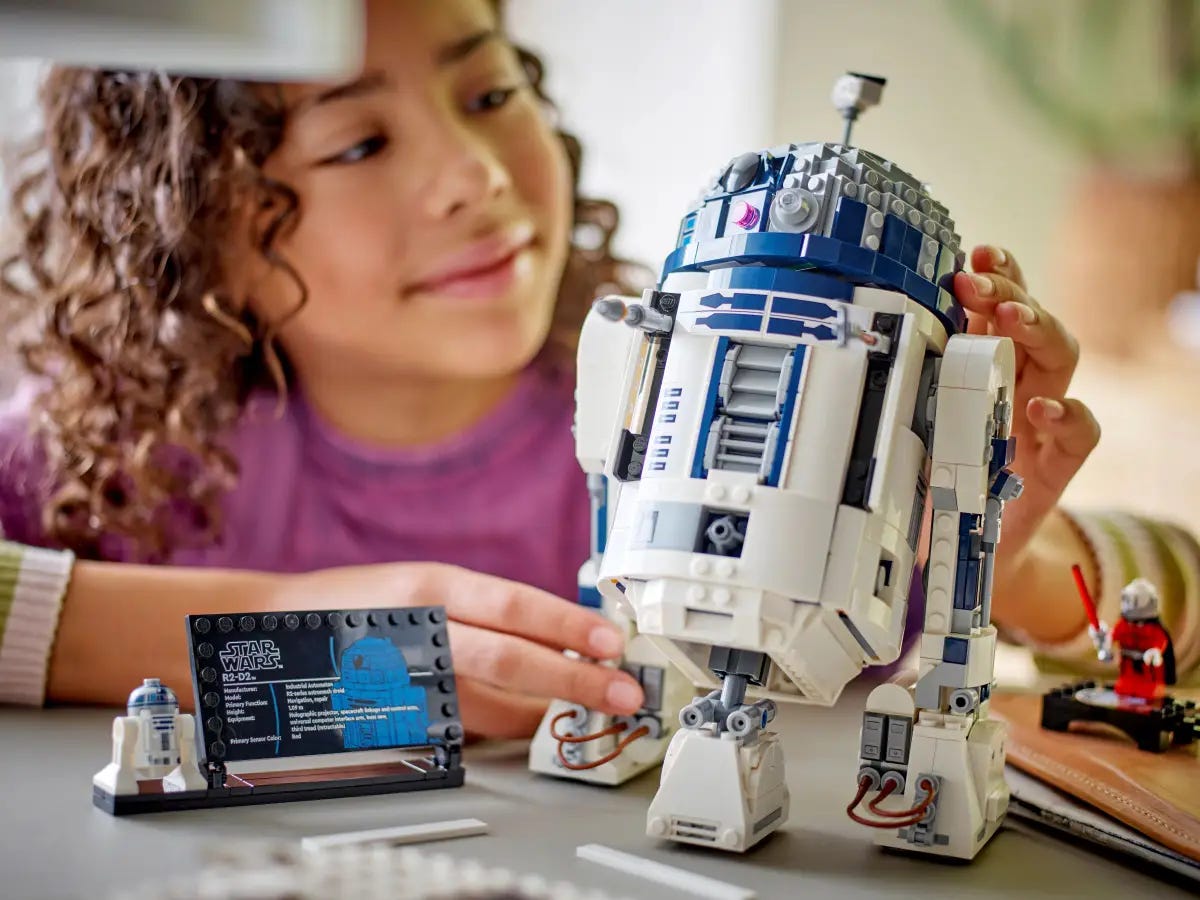The Partnership that Saved Lego
In the time since you started reading this sentence, Lego has produced nearly 2,500 new bricks.
As the most valuable toy company in the world, Lego produces 60 billion bricks each year to keep up with global demand.
But in 1998, Peter Eio, the head of Lego America was trying to save Lego from bankruptcy.
Lego faced multiple threats. Kids were playing less with plastic toys and more with video games. Competitors like MegaBlox were stealing market share after Lego’s patent expired. And financial pressures were mounting from debt the company had taken on in order to expand globally.
1998 was the first year the firm had ever faced declining sales. The company laid off 1,000 employees.
That is also when LucasFilms contacted Peter with a question: would Lego be interested in partnering for the new Star Wars film release?
Peter immediately saw the potential of a Lego/Star Wars partnership. Star Wars could infuse Lego with an emotional narrative that would help bring their toys to life. And Lego could offer Star Wars a playful entry point to a younger audience, less familiar with the Star Wars brand.
But Peter also knew this partnership was far outside of Lego’s comfort zone. Lego had always relied on characters and storylines developed in-house; they had never done a licensing partnership before. Also, Lego had a strict policy against violent themes.
Peter soon faced strong internal opposition to the partnership. “Their initial reaction to Star Wars was one of shock and horror that we would even suggest such a thing,” he shared years later. One board member responded, “Over my dead body will you be launching Lego Star Wars in Europe.”
The most transformative ideas - including groundbreaking partnerships - often face the strongest opposition at the outset. Overcoming that opposition requires understanding the context, the history and values of the people and organizations involved.
Lego’s Origins & Culture
In 1932, in the midst of the Great Depression, Danish carpenter Ole Kirk Christiansen started making wooden blocks for children to supplement his income. What began as a side hustle turned into a company that he named LEGO, a mash-up of two Danish words — “leg godt” (which translates to “play well”).
He built the company on a set of simple values, like creativity and quality. To this day, Lego remains a private company that has repeatedly resisted many toy fads. For its first 30 years, Lego sold nothing but building blocks. Even the iconic mini-figurine was not introduced until the late 1970s.
This focus on fundamentals had served Lego well for decades. That is why the Star Wars partnership was viewed as risky among many of Lego’s tenured employees and members of its executive team.
A small start, a huge response
Peter enlisted his deputy Jill Wilfert for an internal advocacy campaign to rally support for the partnership within the company. Together, they highlighted market research from parents that showed support for the Star Wars theme. Eio framed Star Wars not as a fad, but as a classic conflict between good and evil.
Eventually, Lego’s CEO - the son of its founder - weighed in with his support for the Star Wars partnership.
The negotiations between Lego and LucasFilm lasted six weeks. Where LucasFilms had built a strong muscle for partnership negotiations, Lego was less experienced and remained weary. To minimize risk, Lego decided to start small with a limited collection of Star Wars sets.
This careful approach proved valuable. “Other toy companies went a bit overboard [with Star Wars] and there was a feeling of hangover; there was just too much. The LEGO Group had the opposite – we couldn’t meet demand because relatively we had more conservative expectations.”
Customer response to the Lego/Star Wars partnership blew away Lego’s expectations - sales were 500% what Lego had forecasted.
Sales in the US alone reached $130M, representing ~10% of Lego’s total sales for the year.
Lego’s partnership with Star Wars led to a shift within the company. Partnerships became the path forward. Lego added partnerships with Disney and Harry Potter. When these succeeded, Lego added more - Indiana Jones, Avatar, Batman, Minions, MineCraft, Stranger Things and others.
These partnerships were critical to Lego’s turnaround along with a new CEO, who streamlined operations and cut costs.
Lego remains selective with their partnerships. “We say no to way more things than we say yes to… some brands have spent years trying to convince us. There are certain things that could have great commercial success that we don't do based on our values.”
In the 25 years since it began, the Lego / Star Wars partnership remains intact and was recently extended until 2032. Incredibly two of the executives who forged the original deal in 1998 remain involved, Paul Southern and Jill Wilfert.
That continuity helps: “The relationship has gotten easier because there are people who have been working on both sides all the way through the relationship. They’re like family now. It’s very frank, it’s very open, very collaborative,” Paul Southern shared recently.
Lego’s Brilliance
Lego’s ability to adapt can be seen in more than their partnerships with entertainment brands. Lego builds products that have a way of adapting to their customers’ lives, including mine.
As a kid, I spent countless hours in my room building Lego sets. I challenged myself with more and more complex sets. I also crafted my own unique designs. I dreamt of one day visiting Legoland.
Later, in my teenage years, my attention had shifted elsewhere - to sports, grades and girls. My Legos gathered dust on a shelf in the corner of my bedroom.
In my 30s, my parents shipped me a large box of my Legos when they moved out of my childhood home.
By then, I had moved across the country to California and started a family. I found myself, once again, on the floor playing with Legos … with my daughters. The same bricks I had played with as a child were now part of their childhoods and our memories together. Thanks to my daugthers, I finally visited Legoland.
A few years ago my wife bought me a Lego Statue of Liberty kit from Lego’s Architecture series for adults. Today it sits on the desk in my home office and serves as a daily reminder of all that I have to be grateful, including my great-grandparents decision to set off for Ellis Island over a hundred years ago.
Lessons from Lego’s Star Wars partnership
Anticipate opposition to transformative ideas and partnerships.
Assess the history and culture of your partners, both internally and externally.
Gather the data and make it central to your pitch.
Start small and scale partnerships selectively: quality over quantity.
Build with the long-term in mind.
Sources




